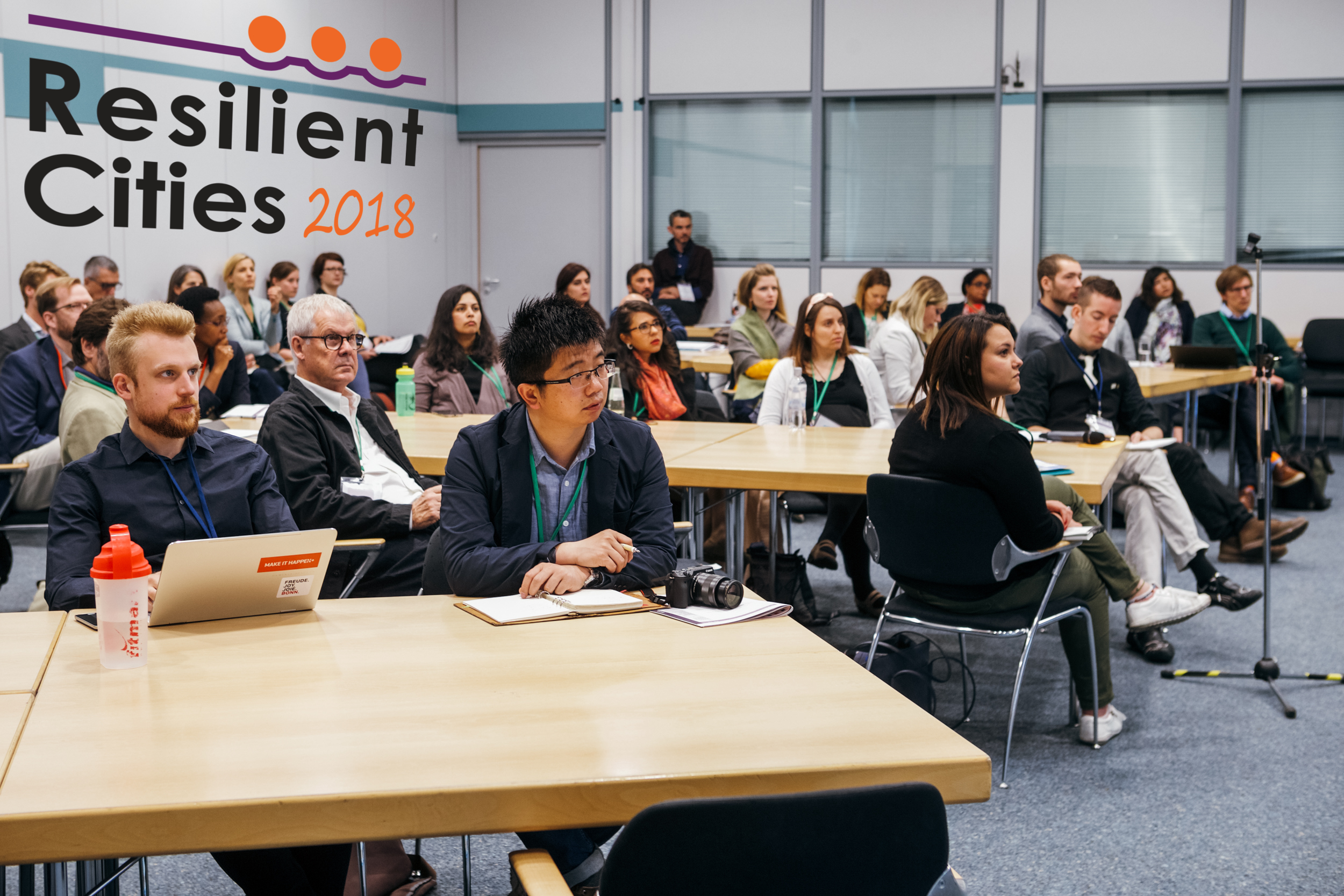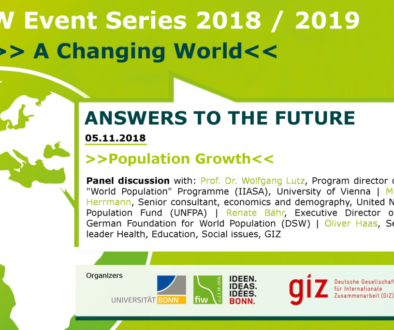Measuring Urban Resilience and Evaluating Impacts
Resilient Cities 2018 – ICLEI Global
Measuring Urban Resilience and Evaluating Impacts

How Resilient Is Your City? City Resilience Profiling Tool is published as part of the Resilient Cities 2018 – The Global Forum on Urban Resilience series and discusses at hand of local, national and international examples from Mozambique, Bloomington (USA), Germany and the EU on the how and what of deciding on, applying and monitoring resilience building measures in the urban context, as presented by Pourya Salehi (ICLEI World Secretariat), Christian Kind (Adelphi research GmbH), Susanna Kankaanpää (Helsinki Region Environmental Services Authority), Gwendolen B. White (City of Bloomington) and Brian App (Chemonics International Inc.).
On Resilience
Even though ‘resilience’ is only a vague, multi-faceted and multi-dimensional concept with no standard measures attached to it, it is a widely used approach of the 21st century for making effects of disaster risk reduction measurements visible, i.e. measurable, and effectively protect human lives and avert economic loss by identifying drivers and factors of natural disasters.
Informed Decision Making
Guiding parameters for local and sub-national governments to achieve optimized selection of fit-for-purpose resilience assessment framework at the early steps of resilience building are
- recognizing type of assessment (i.e. tool, scorecard, index or tool),
- context of risk/ hazard,
- resilience components (leading question being “Resilience of what/ which aspect of the system?”),
- study unit/ scale,
- element in focus – assets or capacities, or both –
- desirable method (bottom-up or top-down).
Starting Point
To overcome the hurdle of lacking capacities to translate knowledge coming forth out of measurements by those who ought to be informed or impacted by them, i.e. public and practitioners, outcomes of measurements can be summarized, made easily accessible and comprehensible, as done by City of Bloomington and their Comprehensive Plan. Another solution could be utilizing the short form of the selected measurement, if available, to start the conversation and for cities with few resources to possibly attract investors. The long form can be used subsequently to follow up on high priority issues with the greatest value/ ROI in identifying gaps.
Application
Focusing on the function of stakeholders in resilience building, possible objectives for municipalities could be to improve the provision of climate resilient urban services, and for communities to increase the adaptation of climate resilient measurements, as done within CCAP (Coastal Cities Adaptation Project) in Mozambique by USAID. Indicators for objective-level results of measurements would accordingly be availability of evaluation measures and tools or number of laws, policies and regulations, and involvement and participation of people, respectively.
Optimization
MONARES (Monitoring adaptation measures and climate resilience in cities) from Germany exemplarily ascertained rare application of adaptation measures, i.e. plans or strategies, by local authorities, which is, however, not unique to Germany. Frameworks applied on the national level or EU-wide are often rather abstract with little focus on monitoring and evaluation, and if applied, set up to only capture short-term outcomes. Hence, potential surrounding urban climate resilience building measures are left untouched: learning opportunities, increased transparency and comparability, improved legitimacy and increased motivation and support.
Pathways
Mainstreaming monitoring methods for urban climate resilience and evaluation of impacts of urban adaptation measures involves applying a flexible framework to cover different topics in different departments, fostering collaborations between science and politic and participation in applied research activities, establishing links and synergies with other monitoring activities (e.g. SDGs, Sendai Framework ISO37120/3), accessing and building on available data, ranging from national to individual institutions (e.g. fire department (emergencies, flooded basements during last heavy rainfall); green spaces/ park authorities) and demonstrating value of monitoring and evaluation.
Public Involvement
Setting up a database to gather data that’s already produced by civil society in their daily life gives them a feeling of ownership, can convey stewardship and allows them to have a stake in determining what ‘resilience’ implies in their community and how resources for resilience building are allocated accordingly. However, issues with data security, accuracy and auditing could interfere.
![]()
All images used in this post and all other posts within the Resilient Cities 2018 – The Global Forum on Urban Resilience series are property of ICLEI.



